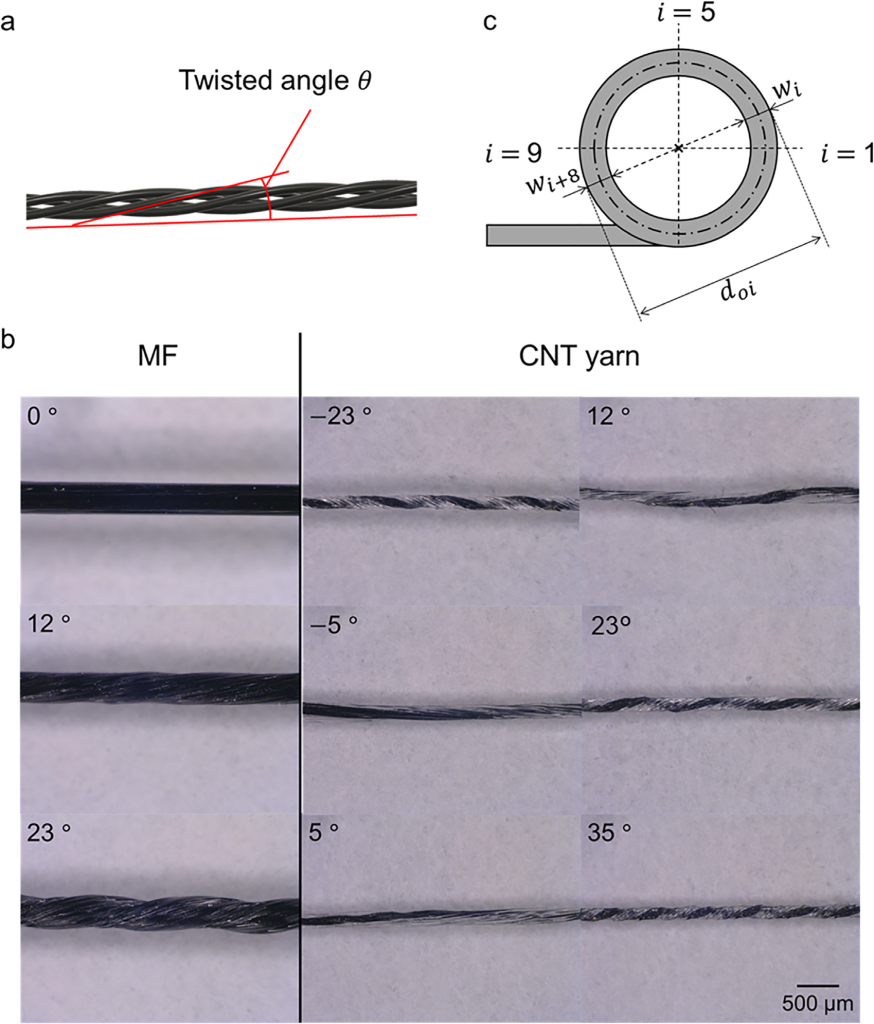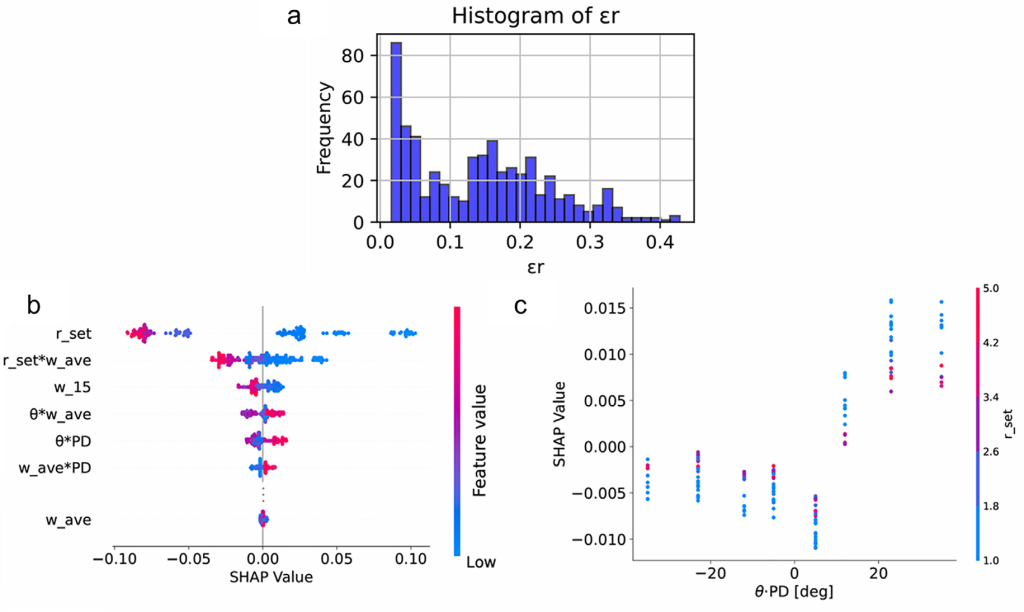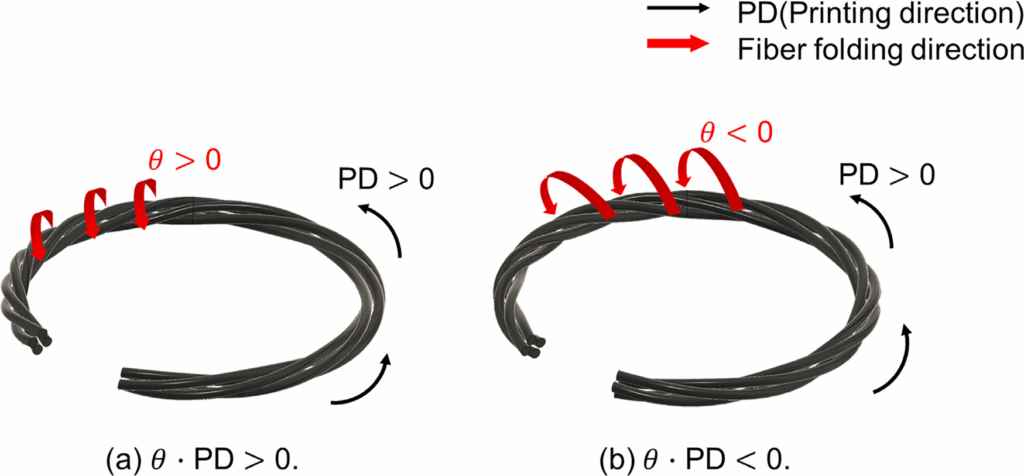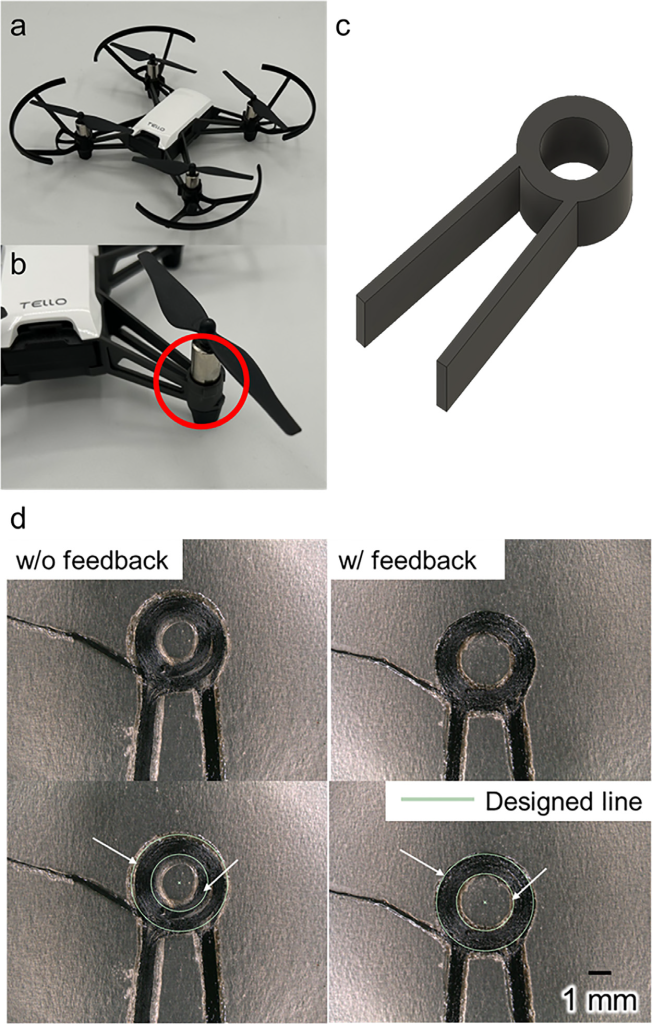A new study from the Tokyo University of Science reveals a machine-learning-assisted method that dramatically improves the accuracy of carbon nanotube (CNT) yarn 3D printing, reducing geometric errors by nearly 80%. Published in Composites Part C: Open Access, the research by Junro Sano and Ryosuke Matsuzaki demonstrates how an explainable AI model can automatically correct printing deviations by pinpointing filament twist, not diameter, as the most critical factor for precision.
 Experimental setup for CNT yarn 3D printing. The spool is positioned above the nozzle to prevent filament buckling during curved printing. Image via Sano & Matsuzaki / Tokyo University of Science.
Experimental setup for CNT yarn 3D printing. The spool is positioned above the nozzle to prevent filament buckling during curved printing. Image via Sano & Matsuzaki / Tokyo University of Science.
Machine learning for fiber-based precision
Conventional continuous carbon-fiber-reinforced polymer (CCFRP) 3D printing relies on thick, brittle filaments that limit the achievable curvature of printed parts typically larger than 1.5 mm. CNT yarns, by contrast, have nanoscale diameters and higher flexibility, making them ideal for fine, curved geometries.
To quantify how yarn twist and diameter influence print quality, the researchers 3D printed circular test paths using CNT yarns (0.15 mm) and Markforged-type carbon fiber filaments (0.4 mm) under varying twist angles, ranging from -23° to 35°. They measured radius deviation and width variation under a microscope and used a LightGBM machine learning model, interpreted with SHAP analysis, to determine which parameters most affected accuracy.
 Comparison of radius errors for twisted and untwisted CNT yarns and carbon fiber filaments, showing twist’s dominant role in print precision. Image via Sano & Matsuzaki / Tokyo University of Science.
Comparison of radius errors for twisted and untwisted CNT yarns and carbon fiber filaments, showing twist’s dominant role in print precision. Image via Sano & Matsuzaki / Tokyo University of Science.
Twist outperforms diameter for precision
The SHAP analysis revealed a previously unknown relationship: the interaction between printing direction and twist angle dictates whether deposited fibers deviate inward or outward. This insight proved crucial. The team found that filament twist, not its small diameter, was the dominant factor in minimizing radius errors in curved paths.
By creating a feedback loop that fed the model’s predictions back into the printer’s settings, they achieved a 79.3% reduction in radius error, enabling the printing of circles with radii as small as 0.7 mm. The model’s predictive accuracy was validated with an R² value of 0.891.
 Relationship between printing direction and twisted angle. Image via Sano & Matsuzaki / Tokyo University of Science.
Relationship between printing direction and twisted angle. Image via Sano & Matsuzaki / Tokyo University of Science.
From lab to lightweight drones
To demonstrate real-world feasibility, the team 3D printed a drone-arm component using their feedback-controlled process. The part printed without feedback showed noticeable shrinkage compared to the design, while the feedback-corrected part closely matched intended dimensions, showcasing the potential of ML-optimized CNT yarn printing for lightweight composite applications.
 Drone-arm components printed without (left) and with (right) machine-learning feedback correction, demonstrating precise dimensional control. Image via Sano & Matsuzaki / Tokyo University of Science.
Drone-arm components printed without (left) and with (right) machine-learning feedback correction, demonstrating precise dimensional control. Image via Sano & Matsuzaki / Tokyo University of Science.
Toward data-driven composite manufacturing
The study highlights how explainable machine learning can help improve precision in continuous-fiber additive manufacturing by automatically compensating for geometric deviations. According to the authors, the method could be extended to fiber-reinforced thermoplastics and other complex curvature geometries, paving the way for smarter, data-driven composite fabrication.
The study adds to a growing body of research exploring how artificial intelligence and data-driven control can improve additive manufacturing precision. Earlier this year, Aalen University researchers introduced a high-precision monitoring system to boost print reliability and enable adaptive corrections during metal printing. In parallel, machine learning has been used to accelerate direct energy deposition research, helping predict process outcomes and optimize parameters in real time. A separate study on AI-controlled 3D printing also demonstrated measurable gains in dimensional accuracy and consistency.
Together, these developments point toward a future of closed-loop, self-correcting additive manufacturing, where models like the one developed by Sano and Matsuzaki bring fiber-reinforced composites into the same intelligent manufacturing paradigm.
While you’re here, why not subscribe to our YouTube channel? Featuring discussion, debriefs, video shorts, and webinar replays.
Want to help shape the future of AM? Join the 3DPI Expert Committee.Feature image shows illustration of the most commonly utilized 3D printing techniques. Image via Hossain et al., ChemPhysMater (2025).
Featured image shows the relationship between printing direction and twisted angle. Image via Sano & Matsuzaki / Tokyo University of Science.


AloJapan.com